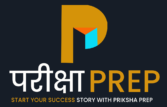Syllabus of TET ( non medical)
| Serial no | Subject | Marks |
| 1 | PSYCHOLOGY | 30 |
| 2 | MATHEMATICS | 30 |
| 3 | PHYSICS | 30 |
| 4 | CHEMISTRY | 30 |
| 5 | GENERAL AWARENESS INCLUDING HP GK AND CURRENT AFFAIRS | 30 |
| TOTAL MARKS` | 150 | |
Qualifying marks
| Catagory | HP TET Minimum
Qualifying Percentage |
HP TET Minimum
Qualifying Marks |
| General | 60% | 90 |
| SC/ST/OBC/ Ex-S./PWD | 55% | 82 |
- Total number of question = 150
- Total time = 150 mintue(2.30)hrs
- Negtive marking = no
- Mode of Paper = Offline OMR based examination
- Type of questions = multiple choice question
PSYCHOLOGY
| Subject | Section | Topics |
| Child Development and Pedagogy | Child Development (Primary School Child) | Concept of development and its relationship with learning |
| Principles of the development of children | ||
| Influence of Heredity & Environment | ||
| Socialization processes: Social world & children (Teacher, Parents, Peers) | ||
| Piaget, Kohlberg and Vygotsky: constructs and critical perspectives | ||
| Concepts of child-centered and progressive education | ||
| Critical perspective of the construct of Intelligence | ||
| Multi Dimensional Intelligence Language & Thought | ||
| Gender as a social construct; gender roles, gender-bias and educational practice | ||
| Individual differences among learners, understanding differences based on diversity of language, caste, gender, community, religion etc. | ||
| Distinction between Assessment for learning and assessment of learning; School-Based Assessment, Continuous & Comprehensive Evaluation: perspective and practice | ||
| Formulating appropriate questions for assessing readiness levels of learners; for enhancing learning and critical thinking in the classroom and for assessing learner achievement. | ||
| Concept of Inclusive education and understanding children with special needs | Addressing learners from diverse backgrounds including disadvantaged and deprived | |
| Addressing the needs of children with learning difficulties, ‘impairment’ etc. | ||
| Addressing the Talented, Creative, Specially abled Learners | ||
| Learning and Pedagogy | How children think and learn; how and why children ‘fail’ to achieve success in school performance. | |
| Basic processes of teaching and learning; children’s strategies of learning; learning as a social activity; social context of learning. | ||
| Child as a problem solver and a ‘scientific investigator’ | ||
| Alternative conceptions of learning in children, understanding children’s ‘errors’ as significant steps in the learning process. | ||
| Cognition & Emotions | ||
| Motivation and learning | ||
| Factors contributing to learning – personal & environmental | ||
MATHEMATICS
| 1) Number System |
| 2) Algebra |
| 3) Ratio and Proportion |
| 4) Geometry Marks |
| 5) Mensuration |
| 6) Data handling |
7)Introduction to graphs |
8)Coordinate geometry |
9) static and probability……………………………………….. |
PHYSICS
- Solid State Physics.
- Nuclear Physics.
- Mathematical Physics.
- Quantum Mechanics.
- Statistical Mechanics.
- Classical Mechanics.
- Laws of motion.
- Thermal properties of matter.
- Units and measurements.
- Kinetic theory.
- Work, energy, and power.
- Wave optics
- Physical-world.
- Mechanical properties of solids.
- Ray optics and optical instruments.
- Motion in a straight line.
- Motion in a plane.
- Mechanical properties of fluids.
- Systems of particles and rotational motion.
- Electric charges and fields.
- Moving charges and magnetism.
- Electromagnetic induction.
- Electrostatic potential and capacitance.
- Magnetism and Matter.
- Current electricity.
- Alternating current.
- Dual nature of radiation and matter.
- Electromagnetic waves.
- Waves2017
- Semiconductor electronics.
- Communication systems.
CHEMISTRY
- Atomic Structure & Chemical Bonding.
- Periodic Classification.
- Chemistry & f’ block elements.
- General Principles of Metallurgy.
- Chemical Kinetics & Chemical Equilibrium.
- Electro-Chemistry.
- Solids & Solutions.
- Organic reaction mechanism.
- Heterocyclic Compounds.
- Amines, Amino Acids, and Proteins.
- Chemistry of natural products.
- Separation Methods (Unit Operations).
- Ceramic Industries.
- Sources of water & Quality.
- General Purification Methods of water.
- Water Softening Method.
- Qualitative & Quantitative analysis.
- The s – block elements.
- P-block elements – group 14 (carbon family).
- Organic chemistry-some basic principles and techniques and hydrocarbons.
- Surface chemistry.
- Chemical equilibrium and acids-bases.
- Hydrogen and its Compounds.
- Atomic structure.
- D and f block elements & coordination compounds.
- Classification of elements and periodicity in properties.
- Environmental chemistry.
- Chemical bonding and molecular structure.
- Solid-state.
- States of matter: gasses and liquids.
- Electrochemistry and chemical kinetics.
- General principles of metallurgy.
- Organic compounds containing c, h, and o.
- P- block elements group 13 (boron family).
- P-block elements.
- Chemistry in everyday life.
- Haloalkanes and haloarenes.
- Organic compounds containing nitrogen.
General awareness including HP, Current affairs and environment studies
